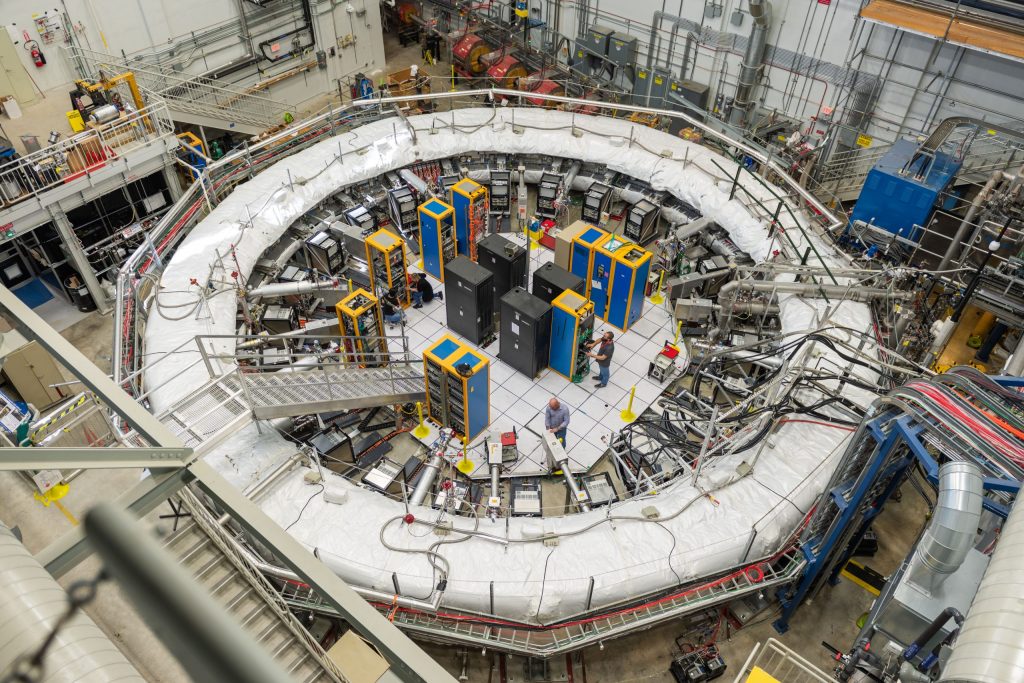
- Dit evenement is voorbij.
#gminus2 New results from the Muon g-2 experiment at Fermilab – Publication / Scientific Seminar
10 augustus 2023 @ 16:00 - 17:00

Muon g-2 doubles down with latest measurement, explores uncharted territory in search of new physics.
Physicists now have a brand-new measurement of a property of the muon called the anomalous magnetic moment that improves the precision of their previous result by a factor of 2. An international collaboration of scientists working on the Muon g-2 experiment at the U.S. Department of Energy’s Fermi National Accelerator Laboratory announced the much-anticipated updated measurement on Aug. 10. This new value bolsters the first result they announced in April 2021 and sets up a showdown between theory and experiment over 20 years in the making. “We’re really probing new territory. We’re determining the muon magnetic moment at a better precision than it has ever been seen before,” said Brendan Casey, a senior scientist at Fermilab who has worked on the Muon g-2 experiment since 2008.
Physicists describe how the universe works at its most fundamental level with a theory known as the Standard Model. By making predictions based on the Standard Model and comparing them to experimental results, physicists can discern whether the theory is complete — or if there is physics beyond the Standard Model. Muons are fundamental particles that are similar to electrons but about 200 times as massive. Like electrons, muons have a tiny internal magnet that, in the presence of a magnetic field, precesses or wobbles like the axis of a spinning top. The precession speed in a given magnetic field depends on the muon magnetic moment, typically represented by the letter g; at the simplest level, theory predicts that g should equal 2.
The difference of g from 2 — or g minus 2 — can be attributed to the muon’s interactions with particles in a quantum foam that surrounds it. These particles blink in and out of existence and, like subatomic “dance partners,” grab the muon’s “hand” and change the way the muon interacts with the magnetic field. The Standard Model incorporates all known “dance partner” particles and predicts how the quantum foam changes g. But there might be more. Physicists are excited about the possible existence of as-yet-undiscovered particles that contribute to the value of g-2 — and would open the window to exploring new physics.
The new experimental result, based on the first three years of data, announced by the Muon g-2 collaboration is:
g-2 = 0.00233184110 +/- 0.00000000043 (stat.) +/- 0.00000000019 (syst.)
The measurement of g-2 corresponds to a precision of 0.20 parts per million. The Muon g-2 collaboration describes the result in a paper that they submitted today to Physical Review Letters. With this measurement, the collaboration has already reached their goal of decreasing one particular type of uncertainty: uncertainty caused by experimental imperfections, known as systematic uncertainties.
#gminus2 Press Conference: First results from the Muon g-2 experiment at Fermilab


